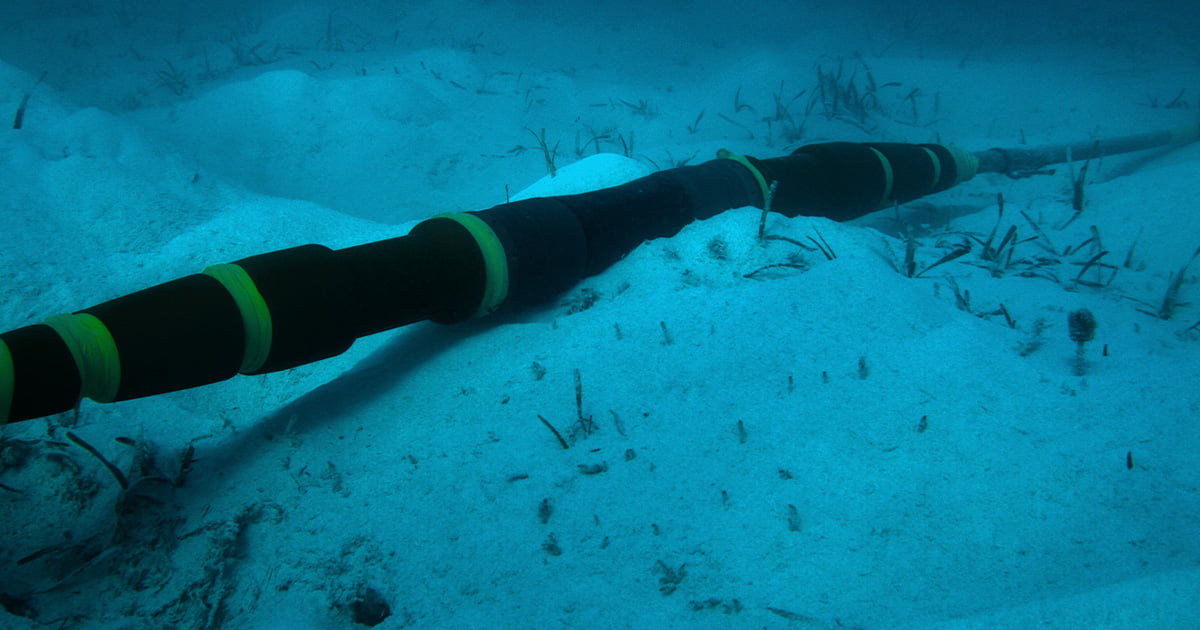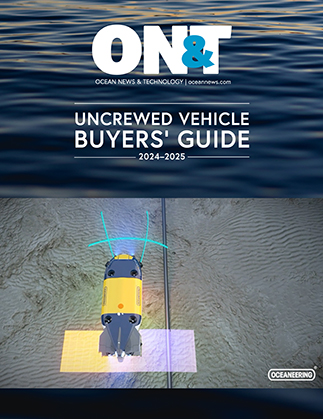The Tonga Domestic Cable Extension (TDCE), which links Tongatapu with Pangai and Neifau, was also severed further offshore. The damage caused by the Hunga Tonga–Hunga Haʻapai eruption left Tonga, a kingdom of some 170 South Pacific islands, largely cut off from the rest of the world, with any satellite service thwarted by the billowing ash cloud.
While residents of small island nations in the Ring of Fire are all too familiar with the threat of earthquakes and tsunamis, in today’s ever-interconnected world the prospect of losing reliable network communications is a mounting concern. ON&T recently sat down with two subsea infrastructure experts, Ocean Specialists’ Perry Wright (VP & General Manager) and Tony Mosley (Director of Business Development), to find out more about how prepared the submarine cable industry is for such outages and how ocean technology might play an increasingly instrumental role in responding to such disruptions.
ON&T: How does the submarine cable industry plan for outages such as the one impacting Tonga?
PW: Crisis management, as with most industries, is an import part of business planning. Given the very nature of subsea cables and the environmental forces they are exposed to, maintenance planning is a big part of preparedness. Disaster drills and designating personnel and equipment to respond is key. In this case, though, the cumulative effects of ash and flooding pose almost impossible challenges for a swift and effective attempt to reestablish a reliable connection. In general, for cables of this type, there are typically three approaches to planning for a subsea cable outage:
- Membership in a Cable Maintenance Zone agreement, which provides a consortium of cable owners with access to cost-effective deep water repair capability. Vessel availability is governed by the consortium agreement, with ongoing/planned repairs typically taking precedence. As the cost of vessel is spread across the consortium as a standing charge, the actual cost of a repair is significantly reduced.
- Alternately, a cable operator may implement a “call out” agreement where the cable system operator maintains all spares and when a repair is needed, a vessel is sourced from the spot market.
- Or, lastly, a dedicated repair vessel, where the cable owner also operates its own repair vessel.
ON&T: What are the steps required to respond to a major submarine cable outage such as this one?
TM: The Operations and Maintenance (O&M) Manual is the playbook for response following a system outage. Normal steps include a system test to pinpoint the location and extent of the fault, using either Time Domain Reflectometry (TDR)—where an electrical signal is imposed on a conductor and the echo of that signal is detected as a reflection from the fault—or Optical Time Domain Reflectometry (OTDR) for damaged Optical Fibers providing a more accurate result.
Once located, the operator will apply for any necessary permits to perform the repair. At which point, the operator either notifies the consortium of the repair requirement or approaches the market for a vessel. In parallel with this, they will verify spares condition and prepare spares for loading to the installation vessel.
On permit approval, the vessel is mobilized to pick up cable spares and transit to the site of the repair. Unfortunately, repairs can take weeks if not months, typically with permitting, particularly for some pacific islands and vessel availability adding time to the project.
ON&T: How would the ship find the exact location of the fault, considering that the cable might be buried by underwater landslide or may have shifted from its original position?
PW: Usually by deploying an ROV outfitted with cable detection equipment. An electrical tone may be applied to the cable to aid in the cable detection. Indeed, the cable may be buried or displaced over a large area requiring the cable route be surveyed prior to the repair. Or the vessel will need to search for the cable at intervals along the route until the cable is detected. It’s vital to have copies of the cable as laid information for the maintenance vessel.
ON&T: Could a case be made for the use of submarine cables for scientific data collection, so that cables could bring further understanding of geologic forces at play and inform future disaster planning?
PW: To date, early earthquakes and tsunamis detection has been achieved by discrete Ocean Observatories and buoys deployed in key locations, such as the Neptune system located off the West Coast of Canada. While more countries with at-risk coastlines have existing systems or are considering similar deployments, there has been a developing interest in using subsea cable systems to create a series of distributed sensor arrays.
Long haul submarine cables use “repeaters” to amplify the optical signals to achieve transmission distances from 500 km to many thousands of kilometers, typically with repeater spacings of approximately 100 km along the length of the cable. The repeater is a pressure housing with electrical power feed and optical fiber communication and offers an ideal environment for the integration of a suite of sensors that can be used to monitor for critical environmental factors, including pressure that would allow the repeater to function as a tsunami detector.
This technology, referred to as “SMART” (Science, Monitoring and Reliable Telecommunications) cables, has been under discussion in a Joint Task Force since 2012. OSI is engaged in this development as a partner, along with Samara Data Systems in a newly formed entity, Subsea Data Systems (SDS) that is actively working on developing this technology, with the aim of providing transformative advancements in tsunami and earthquake monitoring and network integrity.
ON&T: This recent event demonstrates the risks of relying on a single cable for international Internet traffic. What can we learn from this tragedy?
TM: While many nations and telecom operators have multiple cables connecting to a variety of landings across the globe, smaller island nations often do not have the population and GDP sufficient to justify funding the construction of a single cable, let alone multiple cables needed to provide a level of communications redundancy that the rest of us take for granted. Numerous islands have received grants from Development Banks (such as the World Bank and Asian Development Bank) to support subsea cables in addition to having a long communications relationship with the satellite community. Although satellites are not a perfect redundant substitution for undersea fiber, used in combination can support many of these islands until an additional subsea fiber solution can be found.
But the redundancy should not stop at the duplication of cables. It requires separation of the cable path including the landing stations and terrestrial routes at each end of the cable, to avoid a single point of failure. Strengthening of redundant communications paths be it subsea fiber or satellite is always a part of disaster planning and a key operational consideration in other offshore industries where subsea fiber communication is used.
This feature originally appeared in Ocean News & Technology’s Magazine February 2022 edition—Naval Defense & Security. To read more, access the magazine here.

